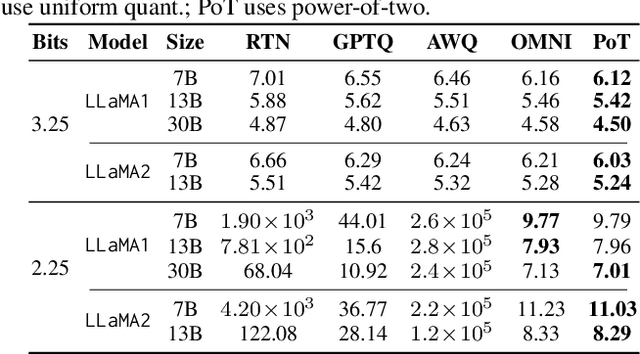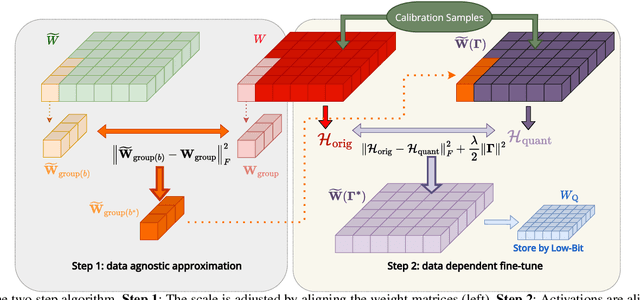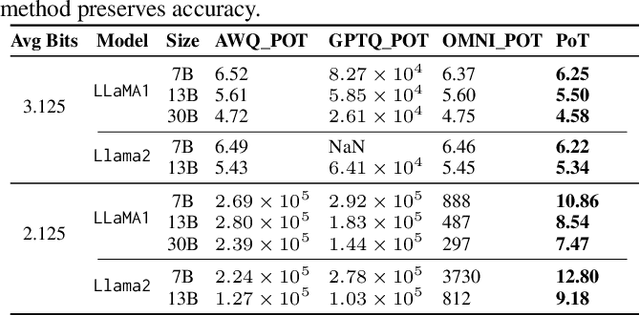Yufei Cui
Nav-EE: Navigation-Guided Early Exiting for Efficient Vision-Language Models in Autonomous Driving
Oct 02, 2025Abstract:Vision-Language Models (VLMs) are increasingly applied in autonomous driving for unified perception and reasoning, but high inference latency hinders real-time deployment. Early-exit reduces latency by terminating inference at intermediate layers, yet its task-dependent nature limits generalization across diverse scenarios. We observe that this limitation aligns with autonomous driving: navigation systems can anticipate upcoming contexts (e.g., intersections, traffic lights), indicating which tasks will be required. We propose Nav-EE, a navigation-guided early-exit framework that precomputes task-specific exit layers offline and dynamically applies them online based on navigation priors. Experiments on CODA, Waymo, and BOSCH show that Nav-EE achieves accuracy comparable to full inference while reducing latency by up to 63.9%. Real-vehicle integration with Autoware Universe further demonstrates reduced inference latency (600ms to 300ms), supporting faster decision-making in complex scenarios. These results suggest that coupling navigation foresight with early-exit offers a viable path toward efficient deployment of large models in autonomous systems. Code and data are available at our anonymous repository: https://anonymous.4open.science/r/Nav-EE-BBC4
Beyond Semantic Similarity: Reducing Unnecessary API Calls via Behavior-Aligned Retriever
Aug 20, 2025Abstract:Tool-augmented large language models (LLMs) leverage external functions to extend their capabilities, but inaccurate function calls can lead to inefficiencies and increased costs.Existing methods address this challenge by fine-tuning LLMs or using demonstration-based prompting, yet they often suffer from high training overhead and fail to account for inconsistent demonstration samples, which misguide the model's invocation behavior. In this paper, we trained a behavior-aligned retriever (BAR), which provides behaviorally consistent demonstrations to help LLMs make more accurate tool-using decisions. To train the BAR, we construct a corpus including different function-calling behaviors, i.e., calling or non-calling.We use the contrastive learning framework to train the BAR with customized positive/negative pairs and a dual-negative contrastive loss, ensuring robust retrieval of behaviorally consistent examples.Experiments demonstrate that our approach significantly reduces erroneous function calls while maintaining high task performance, offering a cost-effective and efficient solution for tool-augmented LLMs.
Nested-ReFT: Efficient Reinforcement Learning for Large Language Model Fine-Tuning via Off-Policy Rollouts
Aug 13, 2025Abstract:Advanced reasoning in LLMs on challenging domains like mathematical reasoning can be tackled using verifiable rewards based reinforced fine-tuning (ReFT). In standard ReFT frameworks, a behavior model generates multiple completions with answers per problem, for the answer to be then scored by a reward function. While such RL post-training methods demonstrate significant performance improvements across challenging reasoning domains, the computational cost of generating completions during training with multiple inference steps makes the training cost non-trivial. To address this, we draw inspiration from off-policy RL, and speculative decoding to introduce a novel ReFT framework, dubbed Nested-ReFT, where a subset of layers of the target model acts as the behavior model to generate off-policy completions during training. The behavior model configured with dynamic layer skipping per batch during training decreases the inference cost compared to the standard ReFT frameworks. Our theoretical analysis shows that Nested-ReFT yields unbiased gradient estimates with controlled variance. Our empirical analysis demonstrates improved computational efficiency measured as tokens/sec across multiple math reasoning benchmarks and model sizes. Additionally, we explore three variants of bias mitigation to minimize the off-policyness in the gradient updates that allows for maintaining performance that matches the baseline ReFT performance.
PoTPTQ: A Two-step Power-of-Two Post-training for LLMs
Jul 16, 2025



Abstract:Large Language Models (LLMs) have demonstrated remarkable performance across various natural language processing (NLP) tasks. However, their deployment is challenging due to the substantial computational resources required. Power-of-two (PoT) quantization is a general tool to counteract this difficulty. Albeit previous works on PoT quantization can be efficiently dequantized on CPUs using fixed-point addition, it showed less effectiveness on GPUs. The reason is entanglement of the sign bit and sequential bit manipulations needed for dequantization. We propose a novel POT quantization framework for LLM weights that (i) outperforms state-of-the-art accuracy in extremely low-precision number formats, and (ii) enables faster inference through more efficient dequantization. To maintain the accuracy of the quantized model, we introduce a two-step post-training algorithm: (i) initialize the quantization scales with a robust starting point, and (ii) refine these scales using a minimal calibration set. The performance of our PoT post-training algorithm surpasses the current state-of-the-art in integer quantization, particularly at low precisions such as 2- and 3-bit formats. Our PoT quantization accelerates the dequantization step required for the floating point inference and leads to $3.67\times$ speed up on a NVIDIA V100, and $1.63\times$ on a NVIDIA RTX 4090, compared to uniform integer dequantization.
Advancing Multiple Instance Learning with Continual Learning for Whole Slide Imaging
May 15, 2025Abstract:Advances in medical imaging and deep learning have propelled progress in whole slide image (WSI) analysis, with multiple instance learning (MIL) showing promise for efficient and accurate diagnostics. However, conventional MIL models often lack adaptability to evolving datasets, as they rely on static training that cannot incorporate new information without extensive retraining. Applying continual learning (CL) to MIL models is a possible solution, but often sees limited improvements. In this paper, we analyze CL in the context of attention MIL models and find that the model forgetting is mainly concentrated in the attention layers of the MIL model. Using the results of this analysis we propose two components for improving CL on MIL: Attention Knowledge Distillation (AKD) and the Pseudo-Bag Memory Pool (PMP). AKD mitigates catastrophic forgetting by focusing on retaining attention layer knowledge between learning sessions, while PMP reduces the memory footprint by selectively storing only the most informative patches, or ``pseudo-bags'' from WSIs. Experimental evaluations demonstrate that our method significantly improves both accuracy and memory efficiency on diverse WSI datasets, outperforming current state-of-the-art CL methods. This work provides a foundation for CL in large-scale, weakly annotated clinical datasets, paving the way for more adaptable and resilient diagnostic models.
VLM-C4L: Continual Core Dataset Learning with Corner Case Optimization via Vision-Language Models for Autonomous Driving
Mar 29, 2025Abstract:With the widespread adoption and deployment of autonomous driving, handling complex environments has become an unavoidable challenge. Due to the scarcity and diversity of extreme scenario datasets, current autonomous driving models struggle to effectively manage corner cases. This limitation poses a significant safety risk, according to the National Highway Traffic Safety Administration (NHTSA), autonomous vehicle systems have been involved in hundreds of reported crashes annually in the United States, occurred in corner cases like sun glare and fog, which caused a few fatal accident. Furthermore, in order to consistently maintain a robust and reliable autonomous driving system, it is essential for models not only to perform well on routine scenarios but also to adapt to newly emerging scenarios, especially those corner cases that deviate from the norm. This requires a learning mechanism that incrementally integrates new knowledge without degrading previously acquired capabilities. However, to the best of our knowledge, no existing continual learning methods have been proposed to ensure consistent and scalable corner case learning in autonomous driving. To address these limitations, we propose VLM-C4L, a continual learning framework that introduces Vision-Language Models (VLMs) to dynamically optimize and enhance corner case datasets, and VLM-C4L combines VLM-guided high-quality data extraction with a core data replay strategy, enabling the model to incrementally learn from diverse corner cases while preserving performance on previously routine scenarios, thus ensuring long-term stability and adaptability in real-world autonomous driving. We evaluate VLM-C4L on large-scale real-world autonomous driving datasets, including Waymo and the corner case dataset CODA.
Resona: Improving Context Copying in Linear Recurrence Models with Retrieval
Mar 28, 2025Abstract:Recent shifts in the space of large language model (LLM) research have shown an increasing focus on novel architectures to compete with prototypical Transformer-based models that have long dominated this space. Linear recurrent models have proven to be a viable competitor due to their computational efficiency. However, such models still demonstrate a sizable gap compared to Transformers in terms of in-context learning among other tasks that require recalling information from a context. In this work, we introduce __Resona__, a simple and scalable framework for augmenting linear recurrent models with retrieval. __Resona__~augments models with the ability to integrate retrieved information from the provided input context, enabling tailored behavior to diverse task requirements. Experiments on a variety of linear recurrent models demonstrate that __Resona__-augmented models observe significant performance gains on a variety of synthetic as well as real-world natural language tasks, highlighting its ability to act as a general purpose method to improve the in-context learning and language modeling abilities of linear recurrent LLMs.
RALAD: Bridging the Real-to-Sim Domain Gap in Autonomous Driving with Retrieval-Augmented Learning
Jan 21, 2025Abstract:In the pursuit of robust autonomous driving systems, models trained on real-world datasets often struggle to adapt to new environments, particularly when confronted with corner cases such as extreme weather conditions. Collecting these corner cases in the real world is non-trivial, which necessitates the use of simulators for validation. However,the high computational cost and the domain gap in data distribution have hindered the seamless transition between real and simulated driving scenarios. To tackle this challenge, we propose Retrieval-Augmented Learning for Autonomous Driving (RALAD), a novel framework designed to bridge the real-to-sim gap at a low cost. RALAD features three primary designs, including (1) domain adaptation via an enhanced Optimal Transport (OT) method that accounts for both individual and grouped image distances, (2) a simple and unified framework that can be applied to various models, and (3) efficient fine-tuning techniques that freeze the computationally expensive layers while maintaining robustness. Experimental results demonstrate that RALAD compensates for the performance degradation in simulated environments while maintaining accuracy in real-world scenarios across three different models. Taking Cross View as an example, the mIOU and mAP metrics in real-world scenarios remain stable before and after RALAD fine-tuning, while in simulated environments,the mIOU and mAP metrics are improved by 10.30% and 12.29%, respectively. Moreover, the re-training cost of our approach is reduced by approximately 88.1%. Our code is available at https://github.com/JiachengZuo/RALAD.git.
CorrDiff: Adaptive Delay-aware Detector with Temporal Cue Inputs for Real-time Object Detection
Jan 09, 2025



Abstract:Real-time object detection takes an essential part in the decision-making process of numerous real-world applications, including collision avoidance and path planning in autonomous driving systems. This paper presents a novel real-time streaming perception method named CorrDiff, designed to tackle the challenge of delays in real-time detection systems. The main contribution of CorrDiff lies in its adaptive delay-aware detector, which is able to utilize runtime-estimated temporal cues to predict objects' locations for multiple future frames, and selectively produce predictions that matches real-world time, effectively compensating for any communication and computational delays. The proposed model outperforms current state-of-the-art methods by leveraging motion estimation and feature enhancement, both for 1) single-frame detection for the current frame or the next frame, in terms of the metric mAP, and 2) the prediction for (multiple) future frame(s), in terms of the metric sAP (The sAP metric is to evaluate object detection algorithms in streaming scenarios, factoring in both latency and accuracy). It demonstrates robust performance across a range of devices, from powerful Tesla V100 to modest RTX 2080Ti, achieving the highest level of perceptual accuracy on all platforms. Unlike most state-of-the-art methods that struggle to complete computation within a single frame on less powerful devices, CorrDiff meets the stringent real-time processing requirements on all kinds of devices. The experimental results emphasize the system's adaptability and its potential to significantly improve the safety and reliability for many real-world systems, such as autonomous driving. Our code is completely open-sourced and is available at https://anonymous.4open.science/r/CorrDiff.
GeneQuery: A General QA-based Framework for Spatial Gene Expression Predictions from Histology Images
Nov 27, 2024



Abstract:Gene expression profiling provides profound insights into molecular mechanisms, but its time-consuming and costly nature often presents significant challenges. In contrast, whole-slide hematoxylin and eosin (H&E) stained histological images are readily accessible and allow for detailed examinations of tissue structure and composition at the microscopic level. Recent advancements have utilized these histological images to predict spatially resolved gene expression profiles. However, state-of-the-art works treat gene expression prediction as a multi-output regression problem, where each gene is learned independently with its own weights, failing to capture the shared dependencies and co-expression patterns between genes. Besides, existing works can only predict gene expression values for genes seen during training, limiting their ability to generalize to new, unseen genes. To address the above limitations, this paper presents GeneQuery, which aims to solve this gene expression prediction task in a question-answering (QA) manner for better generality and flexibility. Specifically, GeneQuery takes gene-related texts as queries and whole-slide images as contexts and then predicts the queried gene expression values. With such a transformation, GeneQuery can implicitly estimate the gene distribution by introducing the gene random variable. Besides, the proposed GeneQuery consists of two architecture implementations, i.e., spot-aware GeneQuery for capturing patterns between images and gene-aware GeneQuery for capturing patterns between genes. Comprehensive experiments on spatial transcriptomics datasets show that the proposed GeneQuery outperforms existing state-of-the-art methods on known and unseen genes. More results also demonstrate that GeneQuery can potentially analyze the tissue structure.
 Add to Chrome
Add to Chrome Add to Firefox
Add to Firefox Add to Edge
Add to Edge